
Over the past decade, Legat Architects’ Quad Cities studio in Moline, Illinois has grown from a one-man operation with a handful of clients to a thriving studio with a prolific regional portfolio.
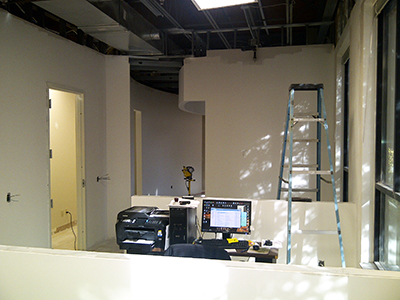
Ten years ago, architect Jeff Sandberg wore a construction helmet and sat in a camping chair at a makeshift desk. Around him, construction crews worked on transforming insurance company offices into Legat Architects’ new Quad Cities studio in Moline, Illinois.
Sandberg, who had already been at Legat for more than a decade, was no stranger to construction sites. The crews didn’t bother him.
“If they were sawing,” he said, “they were sawing. If they were hammering, they were hammering. If I had to take a call, I’d move out into the hall.”
Sandberg had a much bigger concern than the activity in his small office: “I was the firm’s Quad Cities guy, so it was really a sink or swim scenario.”
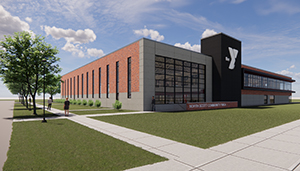
Legat had worked with several western Illinois school districts and its relationship with Moline-Coal Valley School District 40 dated to the early 1990s. However, the firm had nowhere near the same foothold in the Quad Cities as it did in the Chicago area. The challenge was to build Legat’s regional reputation and establish a solid client base in the Quad Cities and beyond.
It was tough at first, with Sandberg manning the helm as the firm’s only employee at the Moline studio. He supported Legat’s Chicago-area studios for some projects, and received remote assistance for new projects within the Quad Cities. His dedication paid off — as the firm’s reputation increased, more projects arrived. The local client base grew. Gradually, the studio took on more staff. The firm secured its first Iowa client.
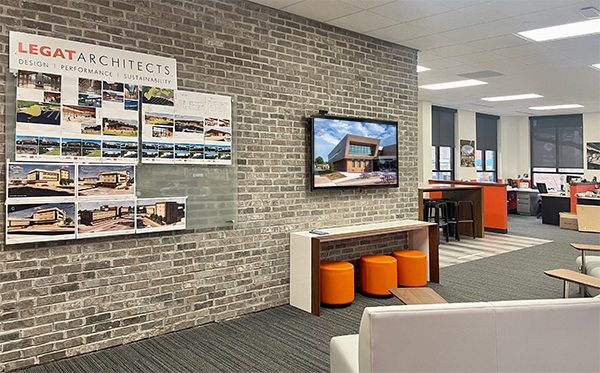
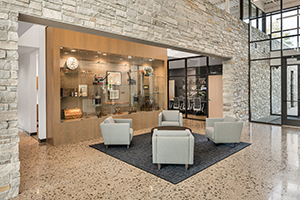
Today, Sandberg leads a growing studio with nine full-time employees. Architects and interior designers from the firm’s five other locations often work at the Moline studio. Among Legat’s Quad Cities region clientele over the past five years are the following:
- Nine school districts
- Ascentra Credit Union
- Augustana College
- Cities of Davenport, Durant, Eldrige, Moline, and Rock Island
- Element Moline
- Galena Territory
- Hyatt Place/Hyatt House East Moline
- MetroLINK
- RiverStone Group
- University of Iowa
- YMCA of Iowa Mississippi Valley
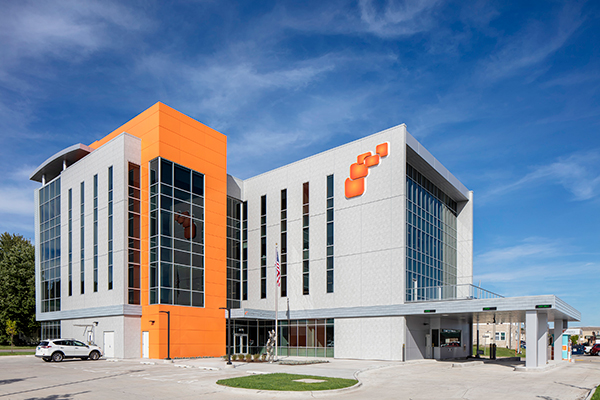
The firm’s Quad Cities portfolio built over the last decade includes new Iowa headquarters for Ascentra Credit Union (Bettendorf) and RiverStone Group (Davenport), The Q multimodal/hotel development in Moline, two new schools for Bettendorf Community School District, Augustana College’s Peter J. Lindberg, M.D., Center for Health and Human Performance, Hyatt Place/Hyatt House East Moline/Quad Cities, and many other projects.
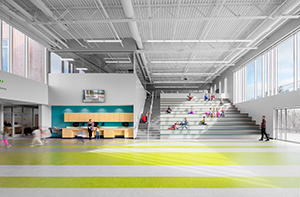
Most recently, the firm designed the new North Scott YMCA now under construction in Eldridge, Iowa, as well as major additions and renovations that will modernize the image of Rock Island High School. Take a virtual tour of the North Scott YMCA and Rock Island High School projects.
Legat Chief Creative Officer Ted Haug attributes the Quad Cities studio’s success to Sandberg and the staff he’s built.
“Jeff’s tenacity, understanding of client needs, and mentorship skills have propelled that studio,” said Haug. “Its success even paved the way for our newest studio in Iowa City.”
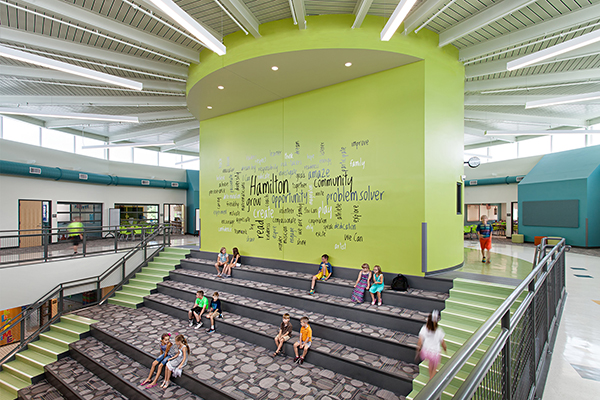
“People Were Astounded”: The School That Started It All
Sandberg credits much of the firm’s regional success to Moline District 40 and his studio’s first significant commission: Hamilton Elementary School. Completed in August 2015, the school went on to be highly influential within the Quad Cities. Enrollment grew by 60 students the year after construction. One of many districts that toured Hamilton was Bettendorf Community Schools, which later commissioned Legat to design two new elementary schools: Mark Twain and Grant Wood.
Haug said, “When you drive past that school, you can’t help but notice it. People were astounded by it. Technically, aesthetically, and functionally, it redefined educational design in that region.”
District 40’s now-retired Director of Facilities Darryl Snyder, who had been Legat’s primary district contact since 1997, was one of the studio’s first clients when it opened its doors.
“While Legat’s designs are attractive, they are also appropriate and sensitive to construction and operating budgets,” said Snyder. “They do what they say they are going to do for the compensation they agree to upfront. Their fee is very competitive. They can be trusted.”
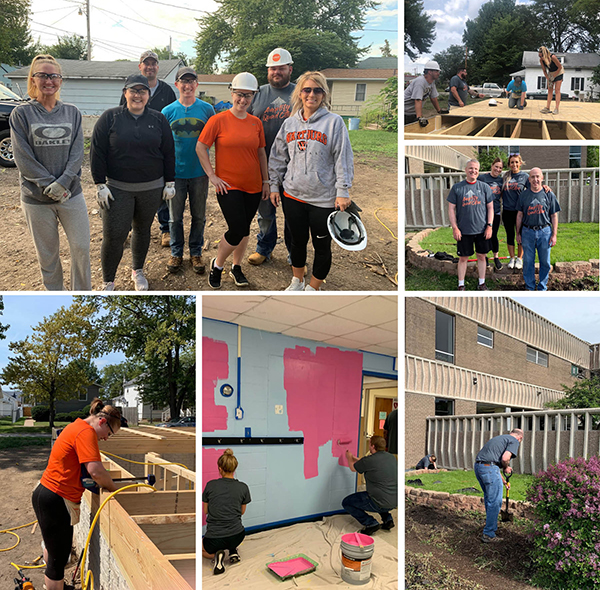
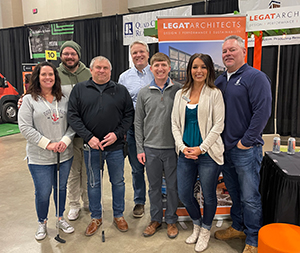
Camaraderie and Community
When Kalyssa Worden joined Legat’s Quad Cities studio in 2016, she experienced an environment that encourages spirited design discussions, having fun, and giving back to local communities.
“While I may have a couple projects on my plate, I never feel like I’m on my own,” she said. “I can ask questions, get design feedback, and get help if I need it. I feel like I’m part of a team instead of just a worker bee.”
Sandberg has carried over to the Quad Cities studio the same sense of camaraderie he experienced when he joined Legat’s Oak Brook studio after receiving his master’s degree at the University of Illinois at Urbana-Champaign.
“I was fortunate enough to begin my career at Legat, in a low-key setting with cooperative leadership that mentors its emerging professionals,” said Sandberg. “So here in the Moline studio there’s a strong work ethic, but we also like to have fun and let things flow naturally.”
Among the studio’s local volunteer efforts are a Habitat for Humanity build in East Moline, a United Way Spring Day of Caring including sprucing up the Downtown Davenport YMCA, and designing the “Best New Hole” for the “Putt-A-Round” indoor golfing event that benefited a youth mentoring program for Big Brothers Big Sisters of the Mississippi Valley.
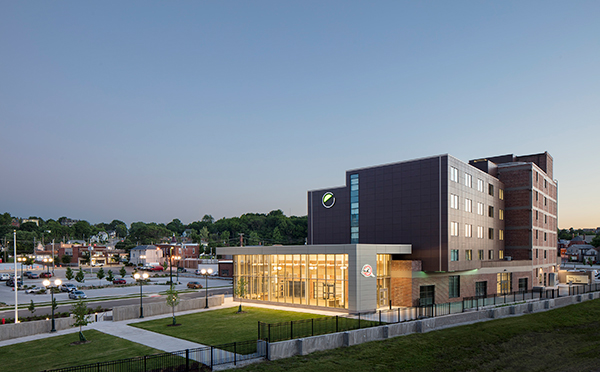
Origins of The Q
When Legat expanded to Moline, there were just two other larger multi-office architects in the area, along with local firms with strong reputations but lacking the resources for large-scale projects.
Two such projects came from Legat’s first new local clients: the City of Moline and Russell (construction company). The former challenged the firm to design a new multimodal transit station. Russell, Legat’s partner on Hamilton Elementary, then tapped Legat’s hospitality team to transform the historic Sears, Roebuck warehouse (in the same building as the multimodal station) into a hotel.
“It was do or die with these two,” said Sandberg. “Out here, reputation is everything, and bad news travels as fast as good. I told the team if a client is not one hundred percent satisfied, let me know right away.”
Today, that mixed-use development, called The Q, not only offers the 96-room Element Moline hotel but also includes a grand station that sets in motion the Quad Cities’ eventual reconnection to downtown Chicago via passenger rail.
In November 2021, Zach Campbell of the Quad Cities studio hosted Legat’s virtual Think Tank session on Transportation & Municipal Design. It assembled regional transportation and economic development leaders to discuss the future of public transportation in the Quad Cities.
Jeff Nelson, chair of the American Public Transportation Association (APTA) and CEO/managing director at MetroLINK (the Illinois Quad Cities’ only public transit provider), said, “The City of Moline and MetroLINK did not envision the station at The Q to be a standalone project with church pews and a Coke machine in the back, but rather part of a mixed-use, transit-oriented development that would bring additional amenities to residents and tourists of Moline, as well as additional revenue for the city.”
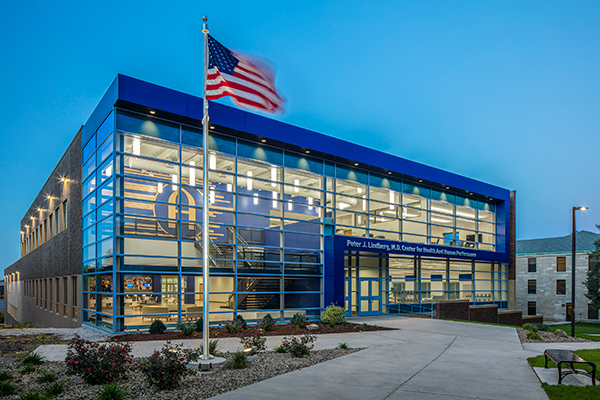
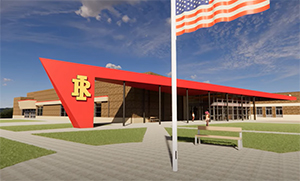
Good Things Happening in the Quad Cities
Ten years ago, there was not a lot of activity in Moline when Legat set up shop there.
“Our office building was one of few in the area, and many of the buildings looked unoccupied,” said Sandberg. “Now there’s a lot of growth here and we’re at the heart of a vibrant downtown with ever-strengthening connections to our Quad Cities neighbors.”
The firm’s office at 1515 5th Avenue is within walking distance of the TaxSlayer Center (i.e., sporting/concert arena and conference venue) and a wide variety of restaurants.
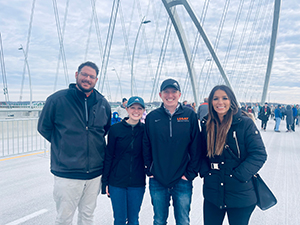
With the recent completion of the eight-lane I-74 Mississippi River Bridge connecting Illinois and Iowa, Sandberg envisions many good things happening in the larger Quad Cities region.
“Historically, the Quad Cities is known as a major industrial area,” he said. “Now we’re seeing a transformation driven largely by growth in e-commerce, healthcare, hospitality, and other service industries. And of course, the river is a huge attraction.”
Contact us to learn more about architecture in the Quad Cities region, or comment below to share your thoughts on this post.


